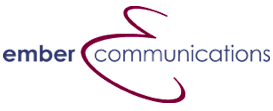As Joe Nathan writes in his April 14, 2014 blogpost in Education Week, “Opportunities to create new, innovative public schools should be available to district educators” (and not just charter school educators, I would add). That’s what legislation pending before the Minnesota legislature would encourage.
Policymakers: We Can Help Teachers Start New Schools
Who’s for Innovation? Yes—Unions!
Who’s for Innovation? Unions!
Who’s for Innovation? Teachers!
Who’s for Innovation? School Boards!
What Happens in a Good Education?
Earlier this week, I shared my classical learning experience led by Mill City High School start-up coordinator John Miller—to demonstrate learning in their new high school opening this fall. We had a rich discussion in identifying the quotes we felt best answered the question, “What Happens in a Good Education?”
Can the Classical Past Inform 21st Century Education?
“You betcha,” as we say in Minnesota. I had the opportunity last week to present and participate in an informational event for the new Mill City High School in east downtown Minneapolis, where “Tradition meets Innovation.” The new high school will open this fall, based in classical education, along with global classical studies that fit the multiple world traditions of our city.
Skunk Works: K-12 Education
Can “skunk works” exist in both the charter and district K-12 education sectors? As the author of the first charter school law in the nation, two factors drove me in championing the chartering law: creating innovative new opportunities for learners and empowering teachers with autonomy. In my view, Innovation + Autonomy = Results.
Skunk Works: Freedom to Innovate
Wildlands School—The Uncommon
21st Century Learning–in the Woods
Can Disruptive Innovation Be Good?
Parallel Innovation: The Ocean Liner and the Small Boat
The Split Screen Strategy: Improvement and Innovation
In my last blogpost I suggested that Innovation + Autonomy = Results is key to 21st century learning. Innovation and Autonomy are taking many forms in schools around the country. But let’s face it—too few teachers and schools see this as an option.
Innovation + Autonomy = Results
I hope you had the chance to view last week’s video of a teacher-powered school. The 12 teachers in the Denver Math & Science Leadership Academy use collaborative planning time to meet with their peers, analyze data, and design instruction that meets student needs. They designed their school and have been running it since 2010. The school was created to attract and retain the most accomplished teachers in the field, and so far it is working. The school fields about 30 applications for each open position.

